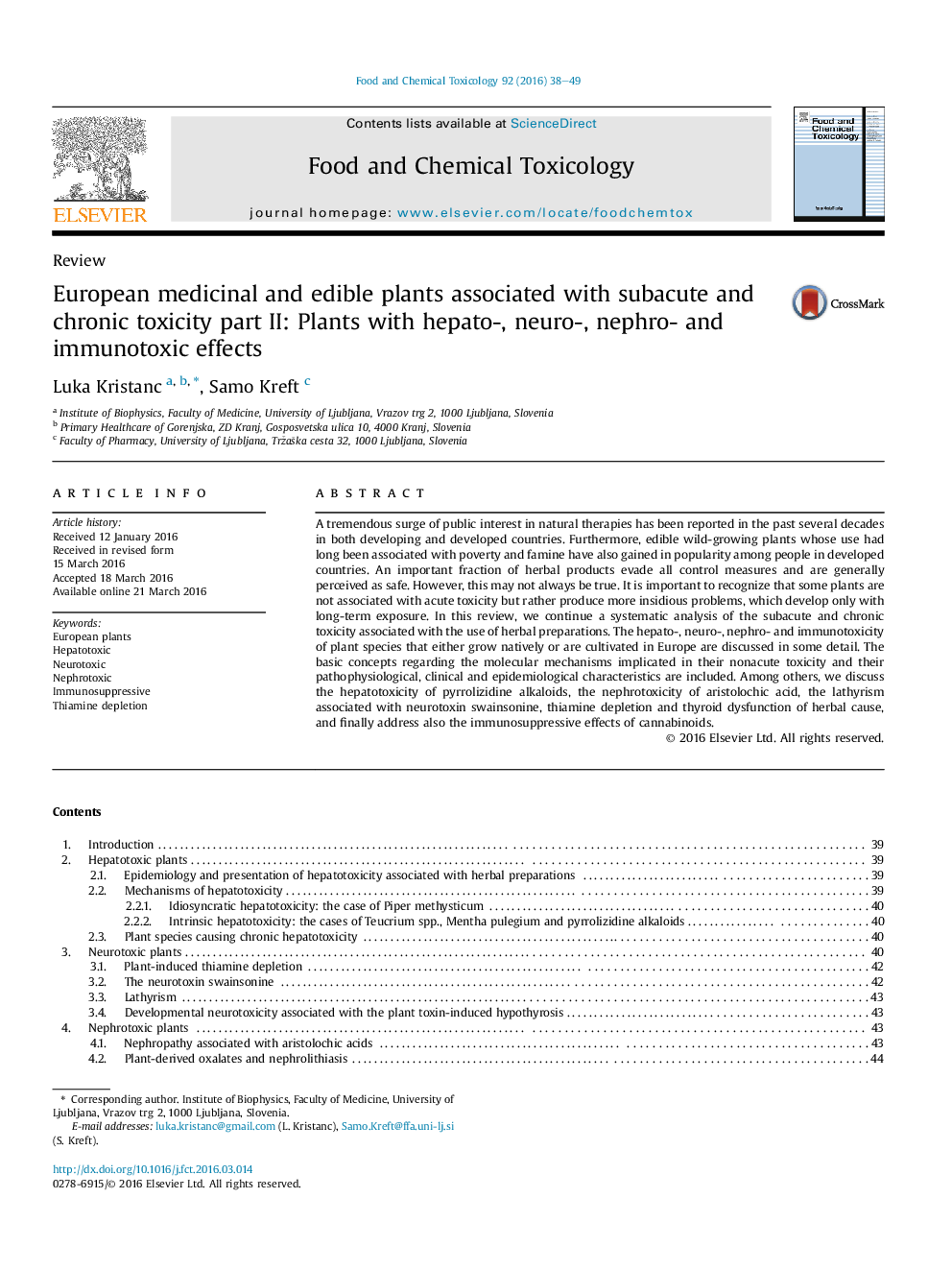| کد مقاله | کد نشریه | سال انتشار | مقاله انگلیسی | نسخه تمام متن |
|---|---|---|---|---|
| 5849316 | 1561752 | 2016 | 12 صفحه PDF | دانلود رایگان |
- Plant-induced chronic hepatotoxicity is mainly idiosyncratic, however, metabolic activation is often implicated.
- Prolonged exposure to pyrrolizidine alkaloids leads to hepatic veno-occlusive disease and pulmonary arterial hypertension.
- Plant-induced chronic neurotoxicity can result from thiamine depletion, hypothyrosis or disruption of neuronal metabolism.
- Aristolochic acids cause interstitial fibrosis and tubular atrophy leading to renal failure, and urothelial carcinomas.
- Cannabinoids and certain flavonoids have potent immunosuppressive effects and could be harmful for immunodeficient persons.
A tremendous surge of public interest in natural therapies has been reported in the past several decades in both developing and developed countries. Furthermore, edible wild-growing plants whose use had long been associated with poverty and famine have also gained in popularity among people in developed countries. An important fraction of herbal products evade all control measures and are generally perceived as safe. However, this may not always be true. It is important to recognize that some plants are not associated with acute toxicity but rather produce more insidious problems, which develop only with long-term exposure. In this review, we continue a systematic analysis of the subacute and chronic toxicity associated with the use of herbal preparations. The hepato-, neuro-, nephro- and immunotoxicity of plant species that either grow natively or are cultivated in Europe are discussed in some detail. The basic concepts regarding the molecular mechanisms implicated in their nonacute toxicity and their pathophysiological, clinical and epidemiological characteristics are included. Among others, we discuss the hepatotoxicity of pyrrolizidine alkaloids, the nephrotoxicity of aristolochic acid, the lathyrism associated with neurotoxin swainsonine, thiamine depletion and thyroid dysfunction of herbal cause, and finally address also the immunosuppressive effects of cannabinoids.
Journal: Food and Chemical Toxicology - Volume 92, June 2016, Pages 38-49
